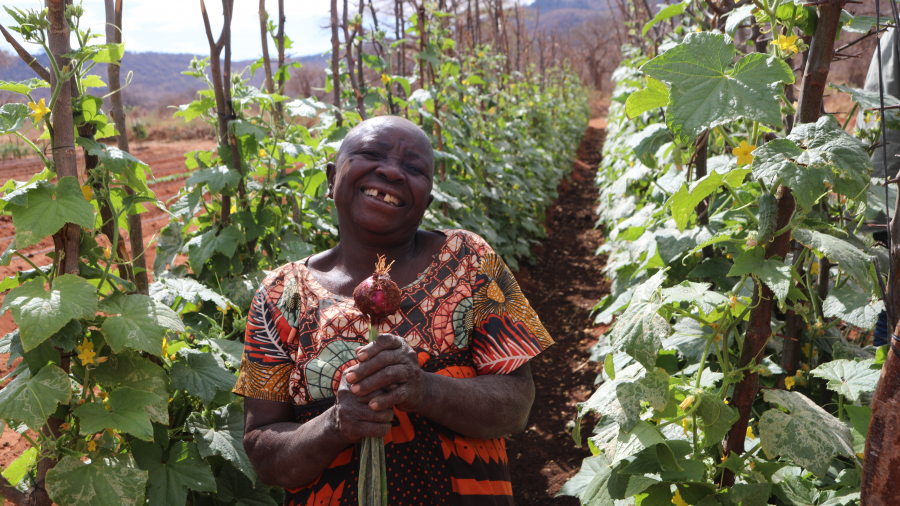
A downloadable version of this lesson is available here:
Ethnography, the scientific study of norms and customs within specific cultures, can help socio-environmental (S-E) researchers better understand how culture affects environmental perceptions, values, and impacts. Ethnographers seek to understand cultural complexities in many global settings, from rural to urban to virtual. They commit to employing self-reflective awareness to understand the ways that bias and individual experience may limit S-E scientists’ ability to fully and objectively know other worlds and experiences (Ogden et al. 2019). Many ethnographers come from dominant, Western, industrial cultures, yet turn their research toward non-Western, Global South, and Indigenous cultures. Thus, they must design their self-reflective awareness of difference as knowledge co-production, which centers on cultural relativism—the view that there is no universal standard by which to judge/compare other cultures—rather than the colonial-style imposition of Western norms.
Ethnography empowers marginalized voices and increases S-E research’s benefits for target communities and cultures by complementing S-E science’s quantitative, modeling, and GIS-mapping methods with on-site interviews, dialogues, and workshops. Ethnography can also enhance the comparative cultural knowledge of individuals from dominant cultures. This growth in understanding supports the mandate to decolonize science and welcome complementary epistemologies and ways of perceiving the world. Ethnographers may use a variety of qualitative and quantitative methods to better understand a target culture and engage in knowledge co-creation. These methods include:
- Structured interviews with individuals in a culture of interest
- Long-term fieldwork within a community
- The examination through a historical lens of how certain cultural values and notable events result in the exploitation or protection of natural resources, human cultures, and non-human lifeforms.
This lesson asks learners to choose among several culturally embedded scenarios and to design an ethnographic research strategy for their chosen culture and region. Learners will have to consider the various methods that they might employ; how to approach ethnography with cultural relativism; and how to integrate Western, quantitative analytical methods with contextual, qualitative ethnographic methods that are culturally sensitive.
- Gain knowledge and skills in using humanist perspectives including history, environmental philosophy, identity (including gender- and class-based inquiry), and geography, to design ethnographic studies.
- Consider and plan how to implement Western science alongside ethnography, thus creating knowledge co-evolution.
- Tailor an ethnographic strategy to a specific culture and locale and prepare the groundwork for implementing the study in that region.

Alien Intervention!
Intelligent aliens have descended from a nearby galaxy, having monitored Earth with great interest for the last 400 years. They are alarmed at the last century’s changes in our planet’s ecology, including human-caused deforestation, climate change, resource extraction, and over-consumption. They offer a new technology that turns plastic waste, methane, and carbon dioxide into amino acids: the building blocks of protein. They are ready to zap Earth with this technology. But you suspect that they come with limited knowledge of our various cultures and needs, that the technology is not necessarily benign, and that they have an agenda of their own. What ethnographic information would you communicate to them to optimize a potential alliance? Have the class brainstorm for 5 minutes what the essential information about human beliefs, needs, and cultures is for a life form who has never met a human.
Developing Ethnographic Methods (One, 75-minute class)
-
As preparation for the session, have learners read and take notes on these SESYNC resources: Explainer: What are Ethnographic Methods? and Lesson: Co-Evolutions in Indigenous Knowledge and Science.
-
(10 min.) After The Hook above, begin the lesson by reviewing the major points from the Explainer, and the Lesson PPT slides below.
Document -
(5 min.) Divide the class into small working groups of three to five learners each. Present these options for groups to choose among or assign groups to provide full coverage across three options:
You are an agricultural researcher hoping to build capacity and climate change resilience in small agrarian communities in rural Tanzania. You have access to data on water tables, market rates for a variety of crops and fertilizers, and climate change models for that region. But you have very little knowledge of local community norms, the farmers’ needs from their own perspective, or how to implement water and fertilizer enhancements using available farm tools.
You are an urban garden designer with a strong record of installing ~1-acre food forests in high-income neighborhoods that have paid for your services. Now, the city government has hired you to design an urban food forest for a formerly redlined neighborhood in Richmond, Virginia that has high rates of poverty but a strong culture of care for its residual deciduous forests. You have little knowledge of the history of the neighborhood, the needs of the residents, or their perception of the food-forest project as a whole.
You are a climate scientist who focuses on the loss of permafrost in the Canadian and American Arctic. You have all the latest climate models and satellite-based remote-sensing tools available to modern science. But you lack embedded, contextual knowledge of these ecosystems and how conditions have changed on the ground in the last 50 years. Your organization has required you to seek Indigenous knowledge to better serve the needs of and build the resilience of local people and ecosystems.
-
(15 min.) Groups now have time to conduct internet-based research on their region and culture of choice, including current environmental challenges. Ask the following questions:
Does the region have important histories involving colonialism, racism, or other exclusionary narratives that are important to its present condition?
Do local people have current, existing conflicts or challenges that affect their ability to survive and thrive in their habitat?
How might local people perceive us when we enter their cultural spaces pledging support?
What do we hope to learn from local people that will truly help them build resilience and capacity, as well as advance our knowledge of their socio-environmental systems?
Which ethnographic methods seem most appropriate for generating knowledge that is complementary to our existing quantitative, tech-driven epistemologies (i.e. remote and satellite sensing, climate models)?
-
(15 min.) Once the above questions have provisional answers, groups will be in a position to complete the first project design for local ethnographic research. If given a 6-month, embedded study period, along with a budget that includes small financial bonuses for local participants, what specific ethnographic methods would groups deploy? Aim for two to three distinct strategies and note questions or challenges that may accompany their implementation.
-
(15 min.) Each group now has ~3 minutes to present their research and ethnographic methods plans, and ~2 minutes for the whole class to ask them questions and help improve their research design. If this time is inadequate for discussion, instructors may allot a portion of the next class to finish the presentations.
-
As homework, have each group post to the class web space a summary of their post-presentation, revised research plan. Then, have them look up two to three ethnographic experts who work in these regions, preferably faculty members at your institution, and send the concise plan to them by email. Ask the expert if they have time to provide a few pointers or corrections to their plan, and ask for opportunities to make this research a real on-the-ground project.
-
Forest ethnography: An approach to study the environmental history and political ecology of urban forests
This ethnographic research article provides an essential case study of how researchers may use epistemological methods and archival materials to better understand the historical context and cultural factors that have influenced the preservation of urban forests in Baltimore, Maryland.
Ogden, L.A., Aoki, C., Grove, J.M. et al. (2019). Forest ethnography: An approach to study the environmental history and political ecology of urban forests. Urban Ecosystems, 22, 49–63. https://doi.org/10.1007/s11252-018-0744-z
-
Knowledge co-production improves understanding of environmental change in the Ethiopian highlands
This ethnographic research article provides insights on how to design dialogues and surveys to co-produce accurate knowledge between local perceptions (through mapping and interviews) and remote scientific methods (GIS, satellite sensing). Researchers found areas of high agreement between epistemologies (such as the decline of native forests due to the reduced rains) and areas of low agreement (such as spatial and temporal cultural variety in an socio-environment that had been thought to be homogeneous).
Steger, C., Nigussie, G., & Alonzo, M. et al. (2020). Knowledge co-production improves understanding of environmental change in the Ethiopian highlands. Ecology and Society, 25, 2. https://doi.org/10.5751/ES-11325-250202
-
Operationalizing knowledge coevolution: towards a sustainable fishery for Nunavummiut
This article profiles a case study that details Indigenous Knowledge (IK) and science co-evolution in Nunavut, Canada that supports inclusive and effective fishery co-management. The authors provide a knowledge co-evolution framework and describe how the collaborative research process has strengthened both IK and science without merging the two epistemologies.
Schott, S. Qitsualik, J., Van Coeverden de Groot, P. et al. (2020). Operationalizing knowledge coevolution: towards a sustainable fishery for Nunavummiut. Arctic Science, 6(3), 208-228. https://doi.org/10.1139/as-2019-0011
-
Negotiating greater Māori participation in Antarctic and Southern Ocean research, policy, and governance
This article focuses on the Antarctic region’s integration of shared governance between Māori and other regional Indigenous peoples and the national and international scientific and regulatory community. It describes approaches to equitable participation including using collective Indigenous voices across different cultures, establishing Indigenous-led organizational structures, and aligning environmental law and policy with Indigenous worldviews.
van Uitregt, V., Sullivan, I., Watene, K. et al. (2022). Negotiating greater Māori participation in Antarctic and Southern Ocean research, policy, and governance. The Polar Journal, 12(1), 42-61. https://doi.org/10.1080/2154896X.2022.2058222